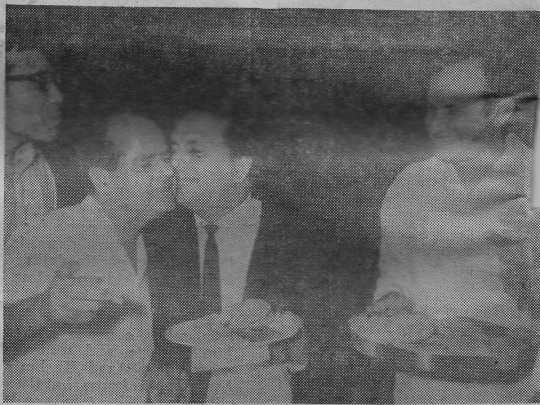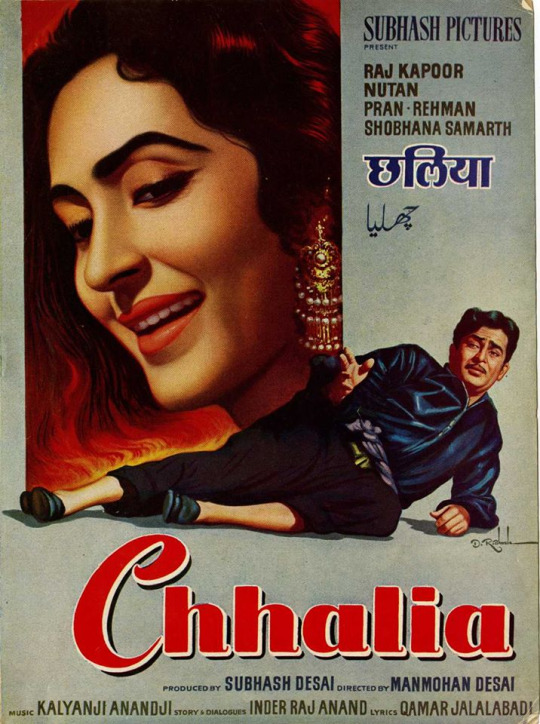#Teri and Eternal age is: old
Text

I made a thing for the A L I V E cast! Quick small database, but for more detailed reference you can check this, this and this ♥
#A L I V E#Teri and Eternal age is: old#And IDK what sexuality the siblings have#They're very aroace honestly but idk use your imagination#Also Blooky uses he/him when he's a robot#and they/them when they're in their ghost body#But he likes both anyway#Reference sheet
206 notes
·
View notes
Note
Tell us about your OCs!
alright so this is the story of Captain Teri Stratford, the Immortal Magic Pirate Werewolf
if that seems like a lot, know that every part of that was decided at level 1. I made Teri for a Monster of the Week pirate one shot played while one of the usual players was unavailable, but then he ended up as a character in the campaign as a whole. fair warning, it's very long
In the early 1000s, a child was born in the Holy Roman Empire (Modern Day Germany). This child was named Teoruni Straub. They were a smart young boy and well loved. Unfortunately, when they were a teenager, their parents took ill. It was a slow and painful death, and it effected young Teoruni greatly. They sought a way to circumvent death, to prevent its inevitable march. In doing so, they began to learn the secrets of alchemy and of old magics.
Teoruni traveled far and wide studying alchemical formulas, learning ancient rituals, striving to uncover the path to eternal life. And, after several decades, they believed himself victorious. An alchemical formula, combined with a ritual, amplified by the presence of concentrated leylines, and they should be granted eternal life to rival the gods. Armed with this knowledge, they sailed for England to conduct their ritual among the standing stones of Stonehenge.
In the year 1034, an unheard of ritual took place to stop aging and death for one person. The ritual worked, in a way. Teoruni Straub was, in fact, made immortal. But, of course, there was a price. As the magic took hold, they were stripped of their memories, their intelligence, their identity. They were eventually found, wandering, confused. All they could remember were fragments. A hint of their name, old practiced gestures. But nothing firm. A fellow traveler guided them to the Stratford family, reasoning that the surnames were close enough.
And from there, a truly ridiculous life began.
Teri (as they decided to name themselves), never aged, never sickened, never tired. They also never regained their previous intellect. But they did regain a love of travel. And so, for century after century, they roamed the world. In the 14th century, while journeying across Wallachia, they became sick for the first time in their immortality. In truth, it was a curse and not a sickness. They had contracted lycanthropy.
Rather than find a way to break the curse, Teri shrugged and moved on with their life. Being a werewolf didn't change too much. They never cared much for silver anyway, and the heightened senses came in handy. So much so, in fact, that they tended to stay in a partially transformed state most of the time. This wasn't helped by the fact that they forgot how to change back and forth from one form into the other. Still, they persevered.
In the 16th century, they came upon what would grow to be one of their greatest passions: sailing. Along with sailing came an even greater passion: piracy. Teri found great joy in plundering the royal navies of the world, stealing treasure and living in the thrill. It was this joy that led to them residing for a time in the Caribbean. And it was while in the Caribbean that they met the singularly most important individual of their very long life.
Azarias Starling (@dionynic 's character) was a celestial, sent to Earth for some time and to eventually bring about the end of the world. But to Teri, he was their dearest friend and co-captain. They sailed together, plundered together, protected their young cabinboy Emi together. It wasn't long before Teri grew to care for Azarias more than they had for anyone before. But when Azarias's divine mission called him and Emi to another time, another Earth, who was Teri to stand in the way?
Teri was an immortal with knowledge of ancient magic. That's who they were. And dammit all, they missed their co-captain. So they began a self-imposed quest. To reunite with Azarias, no matter the cost. In their plunderings, they came upon a stolen magical tome. With the assistance of their crew (Teri could not read), they combined the spells inside with their own ancient work and, for the second time in their life, they performed one of the greatest acts of magic the world had ever seen.
A crack was torn in the fabric of reality and they pulled not just themselves, but their entire brigantine ship and crew into this other Earth after Azarias. But once again, their ritual was only a partial success. They were in the right world, but not the right time. Luckily, Teri Stratford is nothing if not patient. They would simply wait.
And wait they did, for several centuries, until they were once again reunited with the celestial Azarias Starling, their co-captain.

2 notes
·
View notes
Text
30 June Kalyanji Virji Shah (Kalyanji-Anandji): 92nd Birth Anniversary
By

Siraj Syed
Kalyanji Virji Shah (Kalyanji-Anandji): 92nd Birth Anniversary
30 June 1928-24 August 2000
From sleeve notes written for SaReGaMa’s LEGENDS CD set in 2009:
More than half a century after the cobra swayed to the clavioline, masquerading as the been, in ‘Tan dole mera man dole’, its notes still reverberate across India, and in many other parts of the world. It was, and remains, Kalyanji Virji Shah’s best-known musical signature. Kalyanji had first used the instrument in a film called Naag Panchami (1953, music Chitragupta), but that went largely un-noticed. ‘Tan dole’, a Hemant Kumar tune from a box-office hit, was the chart-topper of 1954, so listeners took good notice of its mesmerising been theme. Developed in France by a designer named Constant Martin, the clavioline was introduced in 1947. Five years later, musician Kalyanji was playing it here, in India, in film song takes. Four years after Nagin, Kalyanji had arrived as music director, with Samrat Chandragupta. And the following year, younger brother Anandji, who was a child actor and chorus singer too, joined him to create the K-A team that stood firm for over 40 years. Nevertheless, as Anandji, some four years younger (now 88), is often heard saying, “Kalyanjibhai is watching all this from above. He is very much with us in spirit.” Kalyanji Virji Shah died in the year 2000, at the age of 72.
Born in Kundrodi village of the Mundra taluka in Kutchh, the brothers grew up in Mumbai, where their father ran a food-grain store. Inclined more towards music than academics, they developed the self-taught ability to play a host of instruments, and formed part of school bands. By 1944-45, the teenager siblings had started playing in film song recordings. Big brother set up his own band in 1950, calling it Kalyanji and Party, with Purshottam Upadhyaya singing ‘Too mera chaand maen teree chaandnee’, the super-hit Naushad tune from Dillagi, to thunderous encores. The band performed in Bombay and in other nearby towns. For a while, the businessman in him did surface, and Kalyanji started a tailoring shop in partnership with a friend. Destiny, however, ensured that the shop did not prosper, drawing Kalyanji even closer to a world where a needle was something that played a gramophone record, not a device to stitch clothes with.
Many of us have heard the popular tunes the brothers composed for films like Samrat Chandragupta, Bedard Zamana Kya Jane, Chhalia and Bluff Master, the last two being the earliest directorial forays of director Manmohan Desai, but few would be aware that it was producer Subhash Desai, Manmohan’s brother, who gave Kalyanji his music directorial his break. Impressed with his prowess at song recordings of various recognised composers, Subhash saw a competent future music director in Kalyanji, and made him an offer that was strange, but nevertheless one that he could not refuse. Would he agree to a contract offering him 11 film assignments as music director, with a fee of Rs. 5,000 for the first film, Rs. 10,000 for the second…a recurring Rs. 5,000 increment per film, non-negotiable? The offer was too good to resist, so Kalyanji agreed, but he did ask Subhash, “Why11 films? Why not 10? Or 12?” The reply was convincing, “Eleven is my lucky number.” As it transpired, they did not do 11 films together, but Kalyanji’s career choice was made.
The K-A success story begins with Kalyanji’s kingly debut, Samrat Chandragupta. ‘Chahe paas ho’ is a touching lyric, with a tinge of sadness, as is the next number, ‘Door kahin tu chal’, another Rafi-Lata duet, from Bedard Zamana Kya Jaane, both penned by Bharat Vyas. With a title like Madari, there had to be a snake-charmer and his been in play, and the theme track, penned by Faruk Kaiser and rendered by Lata and Mukesh, indeed provided flashbacks of the legendary Kalyanji patent. Soon after he wrote his first song for them in Chandrasena, Gulshan Bawra penned a real gem in Satta Bazar, and this time the brothers invited their mentor Hemant Kumar to join Lata in the recording room, with amazing results. Who can forget ‘Tumhe yaad hoga’? Not yet the He Man he was to become in his later years, Dharmendra in Dil Bhi Tera Hum Bhi Tere was emoting to Mukesh’s emotion-charged playback, rendering Shamim Jaipuri’s rich poetry. Graduating from smaller set-ups into a Raj Kapoor vehicle, K-A hit big time in Chhalia. Nonsensical verse from a sensible writer, Qamar Jalalabadi, ‘Dum dum diga diga’, with Mukesh providing playback to Raj’s on-screen antics, set the aisles afire.
Soon, they were signed to compose for Mehndi Lagi Mere Haath, a Shashi Kapoor starrer, and Bluff Master. Both films enjoyed reasonable success and the music went around too. In Bluff Master, we find the rare phenomenon of four voices being used for the same actor: Mukesh, Hemant Kumar, Shamshad Begum (Shammi Kapoor in drag) and Rafi. It was Rafi who immortalised ‘Govinda ala re’ and sang the duet ‘Husn chala kuchh aisi chal’ with Lata. Anand Bakhshi wrote inspired lyrics for Phool Bane Angaare, and Mukesh, as usual, delivered them with consummate artistry. By 1964, K-A were in the Premier League. That very year, they came up with such melodious tracks as the lilting ‘Humsafar mere humsafar’ (Purnima), where they teamed up with Gulzar, a rarity, and the two Mukesh solos from Ji Chahta Hai and Himalaya Ki God Mein. The former was written by Majrooh, not a K-A regular. Another infrequent teaming worked very well, as Hasrat Jaipuri wrote and Rafi sang in great style, ‘Dil beqarar sa hai’ (Ji Chahta Hai). Melodious, hummable and catchy. A ghazal on Shammi Kapoor with Bakhshi writing and Rafi singing may not be a common occurrence, but just savour ‘Teri zulfen pareshan’ (Preet Na Jane Reet). Staying with Mukesh on Shashi, after MLMH, the duo came up with a moody duet in Juari, ‘Humsafar ab yeh safar kat jayega’. If there was still any doubt about the standing of the duo in the rankings, Jab Jab Phool Khile laid to rest all criticism. Every track was heard everywhere. The songs had it all: pathos, fun, longing, depression, pep. For both K-A and Anand Bakhshi, the success of JJPK was to remain a milestone forever.
Rafi provided playback for debutant Rajesh Khanna in the theme song of his debut vehicle, Raaz, re-uniting K-A with Shamim Jaipuri, producing haunting results. Indeevar’s lyrics sang of cruel fate in Dil Ne Pukara, and who better to voice them than Mukesh, as ‘Waqt karta jo wafa’. In the same vein was the Suhag Raat lament, ‘Khush raho’. Manna De came in to give playback for Pran in Upkar and Zanjeer, rendering two of his most acclaimed numbers. It took the duo 19 hours to record ‘Mere desh ki dharti’, the patriotic anthem of Upkar. Saraswatichandra, based on a literary classic, needed the linguistic mastery of Indeevar to weave in the songs, and the author of ‘Kasme vaade pyar vafa’ made it count. Filmfare awarded the duo for the best music of the year. It was still pristine K-A, full of melody, working with Lata and Mukesh. Another award followed some years later, for Kora Kagaz, which had a pathos-laden title-track in the voice of Kishore. Not many might realise, but K-A used Kishore Kumar for the first time in the 1968 film Suhag Raat, singing a sad song, a full decade after the duo had started their career. A comic song was rendered by Manna De while Mukesh was called-upon to put across the other sad lyric.
Only Rafi could have set swinging mood for Shashi Kapoor to gyrate on screen in ‘Nain milakar chaen churana’ (Aamne Saamne). Rafi for Shashi it was again in Ek Shriman Ek Shrimati and Raja Saab. Part of the female vocals in Raja Saab came from Suman Kalyanpur. Suman had sung for K-A in MLMH and JJPK too, and was to partner Manhar in his first hit number in Vishwas. Giving Hemlata her break in the same film, K-A paired her with good-old friend Mukesh. Soon, the duo was to show its preference for rotating the strike, training and honing a host of budding singing talent, while reverting to the established names with equal regularity. Like a lot of extremely popular Mahendra-Manoj Kumar, Kishore-Amitabh Bachchan and Kishore-Rajesh Khanna outings. Incidentally, K-A took three days to record the back-ground score of Suhaag Raat, while they needed a whole month for Purab Aur Paschim. For the ‘Om jai Jagdeesh Hare’ bhajan of PAP, the composers used 50 chorus singers to get the effect normally created by violins. They called it human resonance. Delay (natural echo) was the highlight of ‘Mere mitwa’ (Geet). The child-like double speed of ‘Na sun sun sun bura’ (Priya) was simply achieved by recording on spool-tape at a particular speed and playing it back at double the speed. Most of their work was done at the Famous, Tardeo, recording studio.
There is Rafi, and not Kishore, for Rajesh Khanna, oozing sensuality as only he could, in Chhoti Bahu: ‘Yeh raat hai pyasi pyasi’, echoing musician hero Rajendra Kumar’s heart-rending call in Geet and charting a romantic route for Dharmendra in Kab Kyon Aur Kahan? He also offers love lessons in Upaasna; in the Haath Ki Safai duet, he makes a solemn promise of eternal love; and he goes on Dilip Kumar for the intoxicating ‘Peete peete’ duet with Asha Bhosle in Bairaag. As Western as it gets is the rare title chorus ‘Pretty pretty Priya’ (Priya) and as Sanskritised as it can get is the Kishore hilarity ‘Priye praneshwari’ (Hum Tum Aur Woh). Kalyanji-Anandji made Shatrughan Sinha sing in Kashmakash, Amitabh Bachchan in Laawaris and Anil Kapoor in Chameli Ki Shaadi. They also gave ample opportunities to the emerging talent of 70s’ generation, as you can sample on the Shailendra Singh, Suresh Wadkar, Anwar, Alka Yagnik and Kanchan tracks.
Known for their hundreds of stage performances, in India and abroad, both brothers also enjoyed a sturdy reputation as funsters, with a joke for every occasion and a keen sense of self-deprecating humour. They once famously described themselves as medical practitioners. “We offer all lines of treatment. If some producer approaches us with symptoms that demand a classical approach, we recommend the Ayurvedic style of medicine: Slow, but efficacious in the long-term. On the other hand, if some film-maker wants to experiment with the musical score of his film, we suggest Homoeopathic type of tunes: May work, may not. Some element of risk is involved. If, however, he wants the juke-boxes to jingle and listeners to start singing along instantaneously, we churn out Allopathic compositions: Like injections, they have instant, strong effect, but the effect may wear out sooner.” Music, along with laughter, is the best medicine known to mankind. Kalyanji-Anandji have already issued a statutory warning to your troubles to keep away, for there’s no place for them, ‘Mere angne men tumhara kya kaam hae?’




2 notes
·
View notes